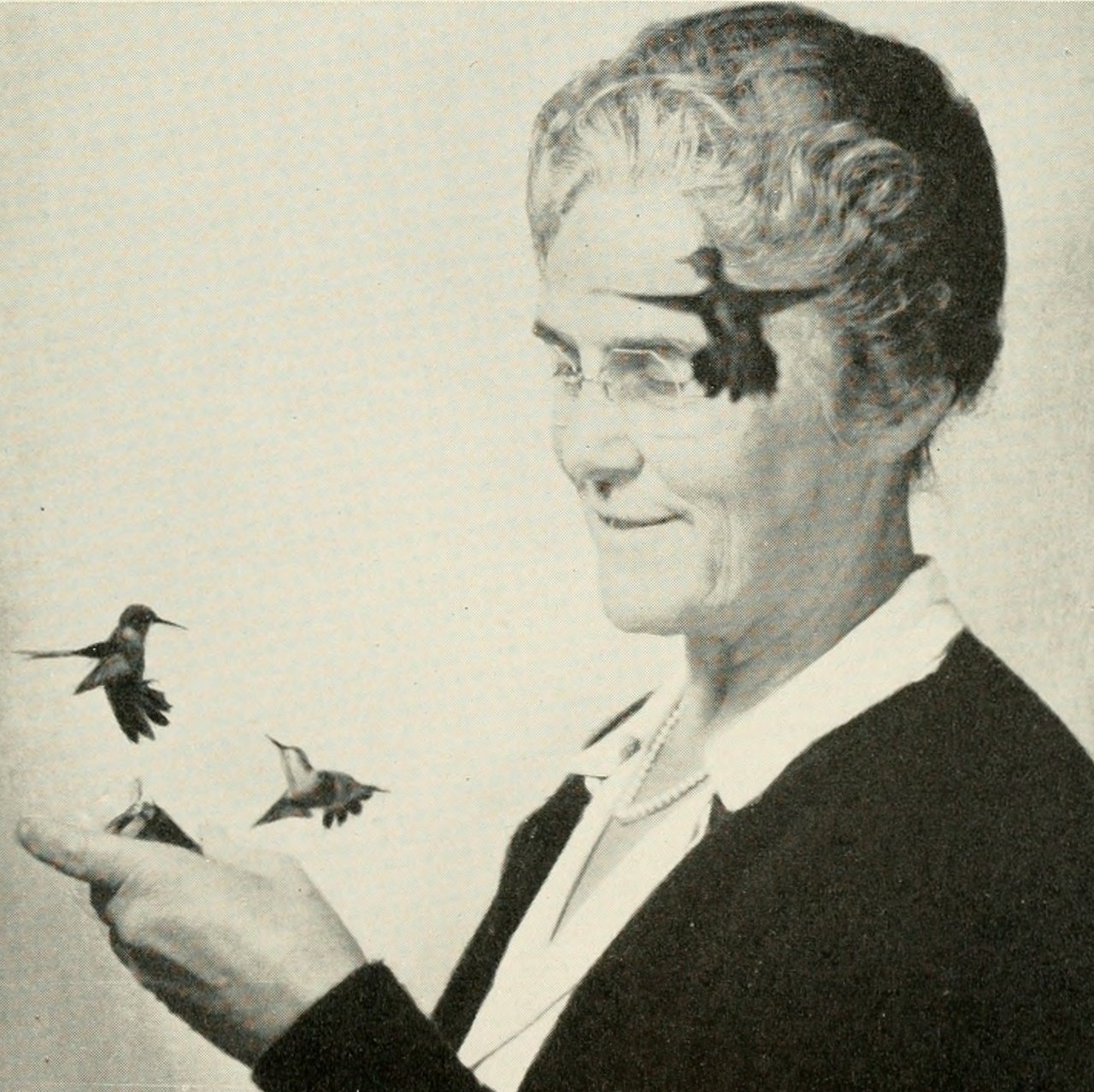Living with hummingbirds
I am sitting in my bed this evening next to an original print of Harold Edgerton’s photograph of Mrs. May Rogers Webster (thanks, as always, to the List Arts Center’s art lending program).
This photograph is nothing short of enchanted for me. I’ve contemplated and written about it since college, thinking of it in relation to the fleeting moment: how time can be invisible in plain sight, how we charge scientists and artists with holding it still for us to see. The photograph seeded for me a sprawling forest of thoughts about artists and scientists—Muybridge, Leonardo, Duchamp, Wilson Bentley, Bill Freeman, Caravaggio, Frost, Géricault, Charlie “Bird” Parker—thoughts that guided and shaped me as I made sense of “vision science” and stumbled my way to graduate school at MIT.
None of that was wrong, necessarily. It was in fact exactly right, I suspect, for a 20-year-old thinker. Time goes by too fast when you’re 20 and trying to make college matter. As an undergrad I worried a lot about my education, whether it would mean anything or if it was passing me by like the flutter of a hummingbird-wing. Mr. Edgerton and Mrs. Webster served me well as patron saints of the fleeting, and I’d like to believe that I’ve kept my eyes open wide wide wide since then.
But a strange thing happens when you live with a work of art. Before it becomes familiar, it becomes unfamiliar. It happened with Tiffany, as I wrote about last year’s art lending program, and I already feel it happening with Mrs. Webster. It’s not that she’s changed on me—it’s that I have—which is exactly it, as I will explain.
I’m 24 now and lost in a swarm of hummingbirds, which is to say the hurly-burly of a frenzied research community. I came to graduate school expecting a vast, monastic expanse of time to “think deeply about simple things,” but what I found instead was that the pace of research was weekly if not hourly—a firehose of talks, preprints, meetings, deadlines, emails, calls, Twitter announcements, sprints—time shattered into a thousand tiny invisible pieces, the rate of progress so rapid that I can barely keep up day by day with the thousands of researchers clamoring for attention. My instinct is no longer to open my eyes wide, it’s to close them tight and hide.
So it does not embarrass me to admit that as I lifted Mrs. Webster off the wall at the List Arts Center, I noticed for the first time in my life that her eyes aren’t really open either—or if they are, it’s just a knowing sliver. I was shaken by that gentle, timeless dignity, her stillness next to the buzzing birds. As much as any hummingbird-wing, Mr. Edgerton also captured Mrs. Webster’s grace with his stroboscopic camera—not to hold it still (how could he, moving for once so much faster than his subject?), but rather to mark it, frame it, memorialize it. This photograph is not Gussie Moran’s serve. It’s the opposite: if anything, it is Mrs. Webster who held Mr. Edgerton still that day in 1936.
Is it crazy to admire that? What would it be like to be Mrs. Webster, the eye of the hurricane, aware of, yes, but never consumed by the turbulence around her? And— is that a meaningful way to orient around your research?
I’m thinking of Don Knuth, who writes that staying on top of things is hard when you’re trying to get to the bottom of things. I’d like to try that this year, I think—an experiment in timelessness over timeliness, wisdom over knowledge—to carve for myself the spaciousness I imagined graduate school to be.
